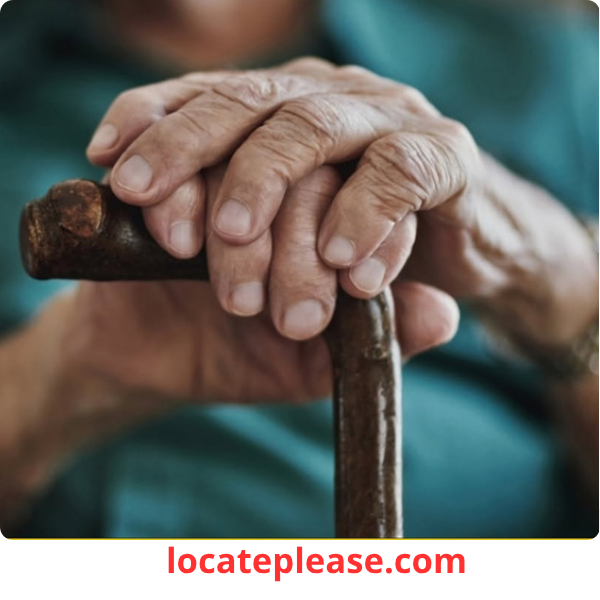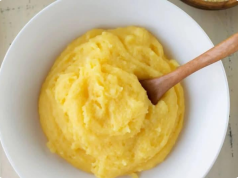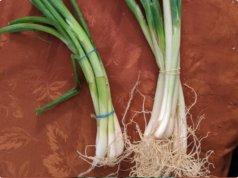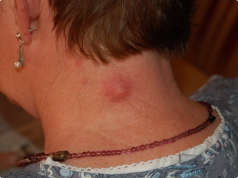You know the scent.
It hits you the moment you walk into a grandparent’s home: a musty, slightly sweet, cardboard-like odor that seems to cling to furniture, curtains, and even the air itself. Often jokingly called “old people smell,” this odor is so distinct, so universally recognized, that it’s become a cultural punchline.
But here’s the truth:
👉 It’s not about poor hygiene.
👉 It’s not from dirty clothes or stale air.
It’s biological — a natural byproduct of aging that begins on the skin and deepens over time.
And yes — it’s real.
The Science Behind “Old People Smell”
The culprit? A compound called 2-nonenal.
First identified by Japanese researchers in 2001, 2-nonenal is created through a process called lipid peroxidation — essentially, the “rusting” of fats on your skin.
As Leslie Kenny, a certified Bulletproof coach and founder of Oxford Healthspan, explained to the New York Post:
“Old people smell comes from lipid peroxidation on top of the skin. It’s basically sebum that has rusted.”
Here’s how it happens:
- As we age, our skin produces more unsaturated fats (sebum) and fewer antioxidants.
- These fats react with oxygen and environmental stressors (like UV rays and pollution).
- The result? 2-nonenal — a volatile compound that emits a stale, greasy, slightly metallic odor.
And because older skin regenerates more slowly, this smell latches on and lingers — even after a shower.
❌ You can’t scrub it away.
❌ Perfume won’t mask it (it just creates a musty perfume combo).
❌ Air fresheners only cover it temporarily.
This is a chemical process, not a cleanliness issue.
Why It Gets Worse With Age
Several biological changes make 2-nonenal more prominent as we get older:
- Declining antioxidant levels — less protection against fat oxidation
- Slower cell turnover — dead skin cells hang around longer
- Hormonal shifts — especially during perimenopause and menopause
- Increased oxidative stress — from diet, stress, and environmental toxins
The result? A subtle but persistent scent that many people — often unknowingly — begin to emit in their 50s and beyond.
Good News: You Can Fight It — From the Inside Out
While you can’t stop aging, you can slow down the process — and one of the most powerful tools isn’t a fancy cream or spray.
It’s food.
Specifically: mushrooms.
Yes — mushrooms.
According to Kenny, mushrooms are the ultimate anti-aging food when it comes to combating “old people smell” — thanks to two powerful compounds:
🍄 1. Ergothioneine – The Skin’s Bodyguard
- A rare, potent antioxidant found almost exclusively in mushrooms
- Protects cells from oxidative damage
- Prevents lipid peroxidation — stopping 2-nonenal at the source
🍄 2. Spermidine – The Cellular Renewer
- Triggers autophagy — your body’s natural “cleanup” process
- Removes damaged cells and recycles them into new, healthy ones
- Linked to longer lifespan and better cellular health
Together, these compounds slow skin aging, reduce oxidative stress, and keep that stale odor at bay.
“Mushrooms are the perfect food to combat this smell,” Kenny says.
“They don’t just mask it — they stop it from forming.”
Best Mushrooms to Eat (And How to Enjoy Them)
While all edible mushrooms contain some ergothioneine and spermidine, these varieties pack the biggest punch:
|
Shiitake
|
Highest in ergothioneine; rich, savory flavor
|
|
Oyster
|
High in spermidine; tender texture
|
|
Lion’s Mane
|
Supports brain health and nerve function
|
|
Maitake
|
Immune-boosting and delicious in soups
|
Easy ways to add them to your diet:
- Sauté with garlic and olive oil
- Add to stir-fries, omelets, or pasta
- Blend into soups or stews
- Roast as a side dish
- Brew into tea (dried shiitake or maitake)
Kenny recommends eating mushrooms early and often — especially during hormonal shifts like perimenopause, when oxidative stress spikes.
But it’s never too late to start.
Beyond the Smell: The Bigger Benefits of Mushrooms
Fighting “old people smell” is just the beginning. Regular mushroom consumption is linked to:
- Lower risk of cognitive decline (including Alzheimer’s)
- Improved insulin sensitivity (helping prevent type 2 diabetes)
- Stronger bones (thanks to vitamin D and minerals)
- Reduced cancer risk (due to immune-modulating beta-glucans)
- Longer cellular lifespan (via autophagy)
In Japan and China, mushroom extracts are already used alongside cancer treatments to support immunity and reduce side effects.
Final Thoughts: Aging Doesn’t Have to Have a Smell
“Old people smell” isn’t a joke.
It’s a real biological process — but it’s not inevitable.
You don’t have to accept a musty fate.
You don’t need harsh chemicals or expensive treatments.
You just need to eat more mushrooms.
So next time you’re at the grocery store, skip the air freshener and head to the produce aisle.
Grab a pack of shiitakes.
Toss them in your stir-fry.
Bake them into your soup.
Because the best way to stay fresh — in body and scent — might just be hiding in plain sight.
Fight the funk. Boost your health. And smell like a vibrant, fully-functioning human — for life.










